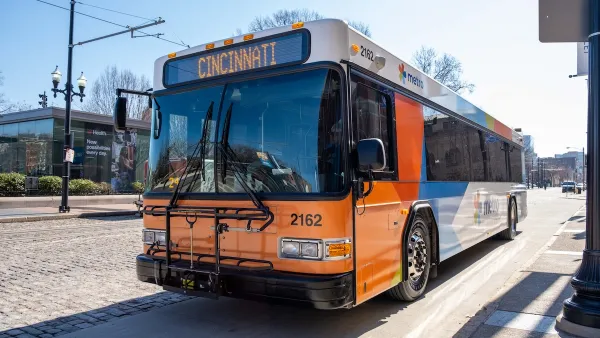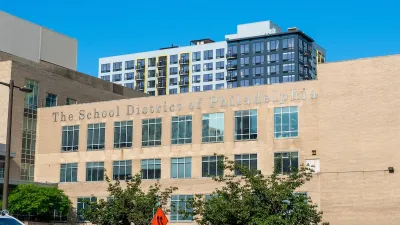Some districts are cutting back on school buses, leaving some children without reliable transportation to and from school.

As school districts cut funding for student transportation, parents are increasingly turning to ride-hailing apps to get their kids to school, reports Jeff McMurray for the Associated Press. The Chicago Public School district, the fourth largest in the nation, now only offers bus service to disabled and homeless students, making only 17,000 of the district’s 325,000 students eligible for rides.
The change is concerning, as it is likely to put far more vehicles on roadways than using school buses. And while some parents can afford to arrange alternate transportation, others have had to pull their kids out of school. Now, new ridesharing services are catering to these parents, promising stricter background checks and requirements for drivers and offering rates lower than typical ride-hailing.
FULL STORY: Schools are cutting bus service for children. Parents are turning to ride-hailing apps

Planetizen Federal Action Tracker
A weekly monitor of how Trump’s orders and actions are impacting planners and planning in America.

Map: Where Senate Republicans Want to Sell Your Public Lands
For public land advocates, the Senate Republicans’ proposal to sell millions of acres of public land in the West is “the biggest fight of their careers.”

Restaurant Patios Were a Pandemic Win — Why Were They so Hard to Keep?
Social distancing requirements and changes in travel patterns prompted cities to pilot new uses for street and sidewalk space. Then it got complicated.

Platform Pilsner: Vancouver Transit Agency Releases... a Beer?
TransLink will receive a portion of every sale of the four-pack.

Toronto Weighs Cheaper Transit, Parking Hikes for Major Events
Special event rates would take effect during large festivals, sports games and concerts to ‘discourage driving, manage congestion and free up space for transit.”

Berlin to Consider Car-Free Zone Larger Than Manhattan
The area bound by the 22-mile Ringbahn would still allow 12 uses of a private automobile per year per person, and several other exemptions.
Urban Design for Planners 1: Software Tools
This six-course series explores essential urban design concepts using open source software and equips planners with the tools they need to participate fully in the urban design process.
Planning for Universal Design
Learn the tools for implementing Universal Design in planning regulations.
Heyer Gruel & Associates PA
JM Goldson LLC
Custer County Colorado
City of Camden Redevelopment Agency
City of Astoria
Transportation Research & Education Center (TREC) at Portland State University
Camden Redevelopment Agency
City of Claremont
Municipality of Princeton (NJ)





























